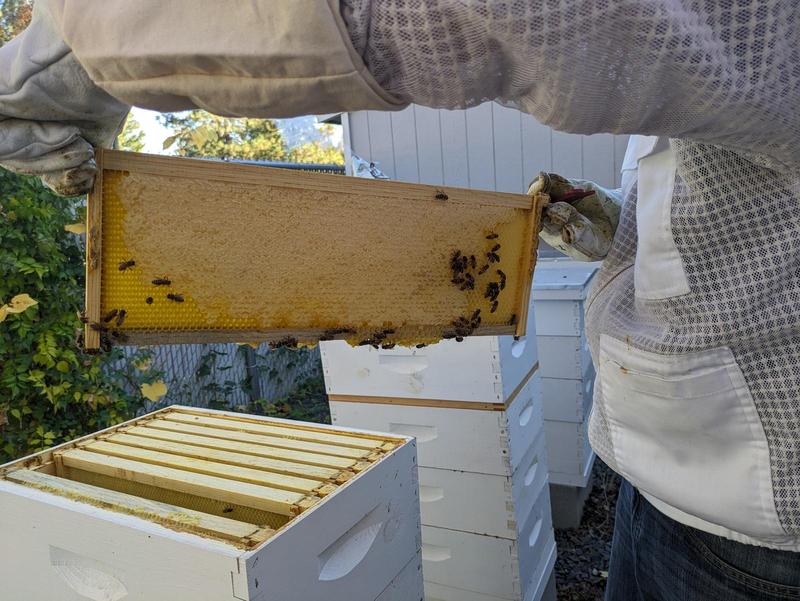
Winterizing the Bees, Year 1
This has been our first year of beekeeping.
We neglected the bees a bit in late summer and early fall. Between Randy's city council campaign, the garden, and all our other activities and projects, we accidentally went a month between hive inspections in September and October. Oops. Our original aim was to inspect the hives every week or two—though all summer, we rarely managed to inspect them that often.
The consequences of missing inspections? Mites, for one.
Treating for varroa mites
Varroa mites are a parasite that lives and feeds on honeybees. Originally from Asia, they're now found pretty much everywhere honeybees are found. Finding them in your hives is inevitable—there's no mite prevention; the key is mite management.
We had tested one of the hives for mites in early September, and found a light load. When we checked in October, two hives both had very heavy loads of mites. We didn't bother checking the other two, because they're all right next to each other, and if one has a lot of mites, the others probably do too. So it was early October when we started treating for mites. Often, beekeepers will start earlier—as soon as they're done harvesting honey—because if your hives have a lot of mites, you may need to treat more than once.
We had read about a lot of different methods of treating for mites. We picked one—formic pro—based on the criteria that it was reasonably safe to do with honey supers on (since we still had some supers that the bees were cleaning out after our honey harvest), it was a natural product, and it kills both adult mites and incubating mites in the capped baby bee cells.
And wow, to quote Randy, that formic acid "is nasty stuff." While it seemed effective at killing things, we probably won't use it again. There are plenty of other methods to try out instead, each with its pros and cons. Some of our friends have used oxalic acid with a vaporizer, or apivar strips; many beekeepers will switch between methods every year (or even use more than one method in the same year) so that the mites don't develop a resistance.
Winterizing
We talked to the local beekeeper who helped us get started about how to winterize the hives. He said he usually doesn't do that much. Some beekeepers in the north insulate their hives or add tarps to keep the wind off, but he just adds a mouse guard (because if mice manage to nest in the hive, they will happily feast on both honey and bees) and maybe adds some sugar cakes for extra winter food.
So, we'll do the same. A beekeeping friend of ours gave us a large bucket of bee pollen, so if we decide we need to supplement the bees' honey stores in the winter or early spring, we can make some sugar-pollen cakes for them. Other than that, winter beekeeping is easy—we wait. The bees hang out in a big bee ball in the hive, doing their best to keep the queen warm and alive. And in the spring, we see if they survived.

3 Years Blogging: Why Write a Blog? How Do You Balance Blogging with Life?
